Has your furry friend ever suffered from thickened, discolored, or cracked skin on his nose or paws? It’s possible that your pooch is dealing with a somewhat common ailment called hyperkeratosis.
This condition isn’t a medical emergency, but it requires veterinary attention, as the thickened skin can crack and become infected. It may also indicate the presence of underlying health problems.
So, you’ll want to prevent hyperkeratosis whenever possible and be sure to take good care of the afflicted areas when and if it occurs. Below, we’ll explain how hyperkeratosis occurs and what you can do to prevent it from affecting your pooch.
Hyperkeratosis in Dogs: Key Takeaways
- Hyperkeratosis is a relatively common problem, characterized by the excess production of keratin. It most commonly occurs on the nose or paws, but it can also occur in other locations.
- While it isn’t a medical emergency, you’ll want to talk to your vet about the problem. Hyperkeratosis can not only be uncomfortable for your dog, but it can make your dog susceptible to infections.
- There are a variety of ways to treat hyperkeratosis, but it’s always better to prevent it from occurring in the first place. This is especially true of golden retrievers, Labs, and other breeds that are especially susceptible to the condition.
What Is Hyperkeratosis in Dogs?
Hyperkeratosis is characterized by the thickening and hardening of the skin. The condition occurs when too much keratin (the primary protein that makes up skin) is produced.
This leads to the presence of excess skin, typically on the paws or nose of a dog. Other commonly affected areas include the edge of ears or the skin on your dog’s tummy.
This excess skin can be uncomfortable or annoying for dogs, but as explained earlier, it isn’t a medical emergency. That said, the skin in these areas will often crack, which can allow infections to set in.
That’s when the real trouble occurs – you don’t want your poor pup’s skin to get infected!
Luckily, you can often prevent hyperkeratosis from occurring in the first place.
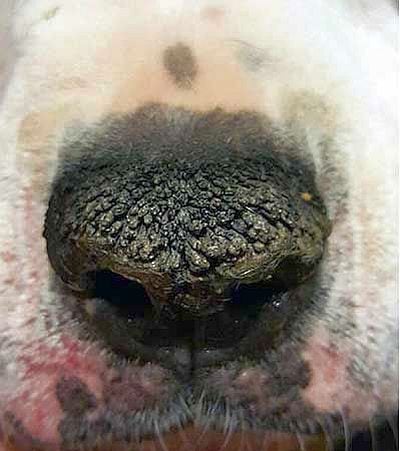
The disease can also be managed via a couple of different treatment options, though prevention is obviously preferable if your furry friend doesn’t currently suffer from the condition.
What Are the Causes of Hyperkeratosis in Dogs?
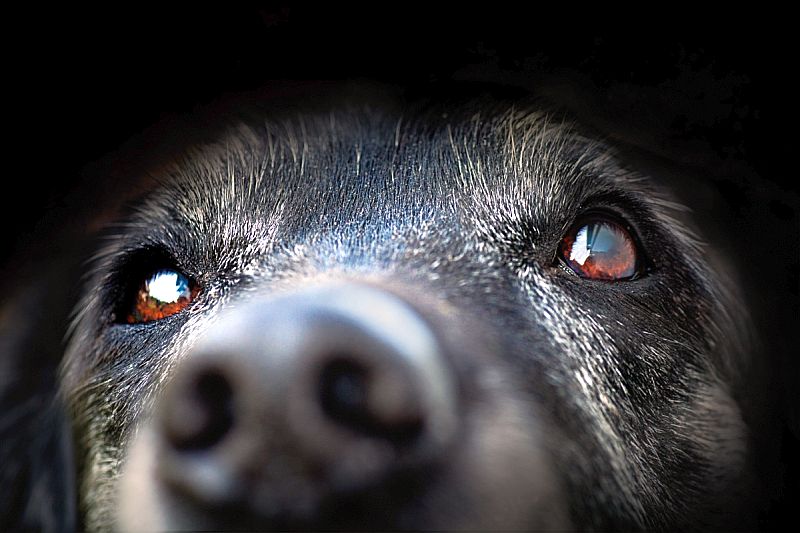
Most dogs who suffer from hyperkeratosis have inherited a predisposition for the condition, though other factors can also make your dog more susceptible.
Some of the most common causes of hyperkeratosis include:
- Genetics: This condition is commonly passed on from one generation to the next, especially in Labs, golden retrievers, Bedlington terriers and a few other breeds. Unfortunately, inherited hyperkeratosis often shows up fairly early in affected dogs, sometimes within the first year of life.
- Age: Hyperkeratosis is a natural part of aging for some dogs, as the skin often thickens for dogs with age. In these cases, it often occurs in pressure points, such as the elbows.
- Parasites: Parasitic diseases like leishmaniasis can lead to skin infections, which may trigger the overgrowth of skin that characterizes hyperkeratosis.
- Autoimmune Diseases: Autoimmune diseases, such as the skin disease pemphigus foliaceus, can trigger the thickening and cracking of the skin.
- Infections: Dogs infected with diseases such as canine distemper may develop hyperkeratosis on the footpads.
- Zinc Deficiency: Zinc deficiency can lead to hyperkeratosis for dogs with conditions like zinc responsive dermatosis.
Each cause requires its own specialized treatment plan, so you’ll need to book an appointment with your veterinarian. This will allow you to identify the underlying cause of your dog’s skin condition and proceed with the best possible treatment.
Don’t have easy access to a vet? You may want to consider getting help from JustAnswer — a service that provides instant virtual-chat access to a certified vet online.
You can discuss the issue with them, and even share video or photos if need be. The online vet can help you determine what your next steps should be.
While talking with your own vet — who understands the ins and outs of your dog’s history — is probably ideal, JustAnswer is a good backup option.
What Does Hyperkeratosis Look Like? What Symptoms Does It Cause?
Areas affected by hyperkeratosis will have a rough, dry appearance, and they will typically be tan, brown, or black.
There’s usually a layer of visible external crust present too. These areas can crack, opening up the door to infection. This can also lead to bleeding, which is most commonly seen on affected paw pads.
There are also a few other signs and symptoms to watch out for, as they often accompany hyperkeratosis. Some of the most notable ones include:
- Changes in activity: Dogs affected by hyperkeratosis may have a more difficult time getting around and carrying out their daily routine — especially if the hyperkeratosis occurs on their paws. You might see your dog limping or trying to prevent things from contacting the affected area.
- Increased licking: Hyperkeratosis makes the skin fairly irritated and dry, so your pooch might start licking the affected area in an effort to get some relief. But while this is an understandable reaction from your pooch, it’s not ideal, as this licking can introduce bacteria to any wounds present.
- Sensitivity in the affected areas: Thanks to the irritation the condition causes, hyperkeratosis may cause your pooch to be sensitive around the paws, nose, or ears. You may notice him pulling away more often when you touch these areas of skin.
How Is Hyperkeratosis Treated in Dogs?
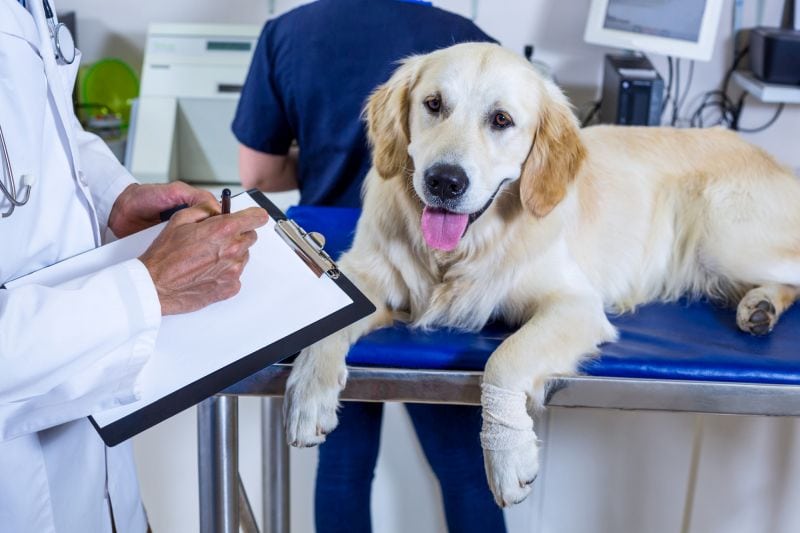
Hyperkeratosis treatments vary based on the cause of the condition.
For instance, hyperkeratosis that is caused by canine distemper or some other disease will need to be treated by first mitigating the underlying infection. Likewise, any parasitic infestation would need to be addressed if that is the cause of your dog’s hyperkeratosis.
Nevertheless, there aren’t treatments available for all causes of hyperkeratosis, such as inherited or age-related cases.
But you can usually treat the affected area, and topical moisturizing treatments (like paw balm) are the most common way to do so. Canine antibiotics may also be necessary to treat any existing infection.
Most topical treatments utilize keratolytics like salicylic acid, lactic acid, and tretinoin to dissolve the excess keratin. Different specific drugs may be prescribed based on the location of the condition and whether or not the affected site is infected.
In some instances, your veterinarian may be able to physically trim down the excess keratin and provide some relief for your pooch. However, this should not be attempted from home.
Unfortunately, most hyperkeratosis treatments are long-term affairs. Battling hyperkeratosis can be an ongoing element of care for a senior dog, with breakouts clearing up only to reoccur again later on. Be diligent in checking your older dog’s body for hyperkeratosis flare-ups!
Is Hyperkeratosis Painful for Dogs?
While hyperkeratosis isn’t necessarily “painful” for pups, it’s can be irritating if left untreated, and the infections associated with the condition can certainly cause pain.
The location of the condition can influence how much it bothers your dog too. For example, hyperkeratosis can be especially bothersome if it’s on your best buddy’s paws, since standing on the affected paw(s) can cause further irritation.
Accordingly, because the issue can be uncomfortable to painful (if complications arise), you’ll always want to contact your vet and devise a treatment plan for your pooch. He’d do the same for you!
Can Hyperkeratosis Be Prevented in Dogs?
Hyperkeratosis can’t always be prevented, especially if it’s hereditary. But there are several things you can do to mitigate your mutt’s risk of developing the condition.
Here are a couple of ways you may be able to prevent your hound from developing hyperkeratosis.
- Invest in a good diet. Zinc deficiencies can play a role in the development of hyperkeratosis, so it’s important to make sure your furry friend is getting all of the nutrients he needs to thrive. You may want to consider upgrading to a higher quality dog food. Work with your veterinarian to find a diet and exercise routine that supports your doggo.
- Stay up to date on routine vet visits. Your veterinarian can help screen your pooch for any underlying issues that may produce hyperkeratosis. It’s also just a good idea to maintain your furry friend’s overall health.
- Use a paw balm. Paw balms can help protect your furry friend’s paws and soothe the affected area for dogs with hyperkeratosis.
- Provide a cushy dog bed. Dogs that rest on hard surfaces like the floor may be more likely to develop calluses and other skin issues. So, make sure your mutt always has a soft place to relax and opt for a high-quality, cozy dog bed.
Which Dogs Are Susceptible to Hyperkeratosis?

While any dog can develop hyperkeratosis, some dog breeds are more genetically predisposed to develop the condition. If you have one of these best buddies at home, you’ll want to pay special attention to your pooch’s paw pads and nose.
- Labrador retrievers
- Bedlington terriers
- Golden retrievers
- Bulldogs
- French bulldogs
- Dogues de Bordeaux
- Boxers
***
Thankfully, hyperkeratosis is not a medical emergency for your mutt. That being said, it should be addressed by you and your veterinarian as soon as possible to protect your pooch from unnecessary irritation and infection.
Has your dog ever dealt with hyperkeratosis? How do you keep your pup’s paws pristine? We’d love to hear all about it in the comments below!
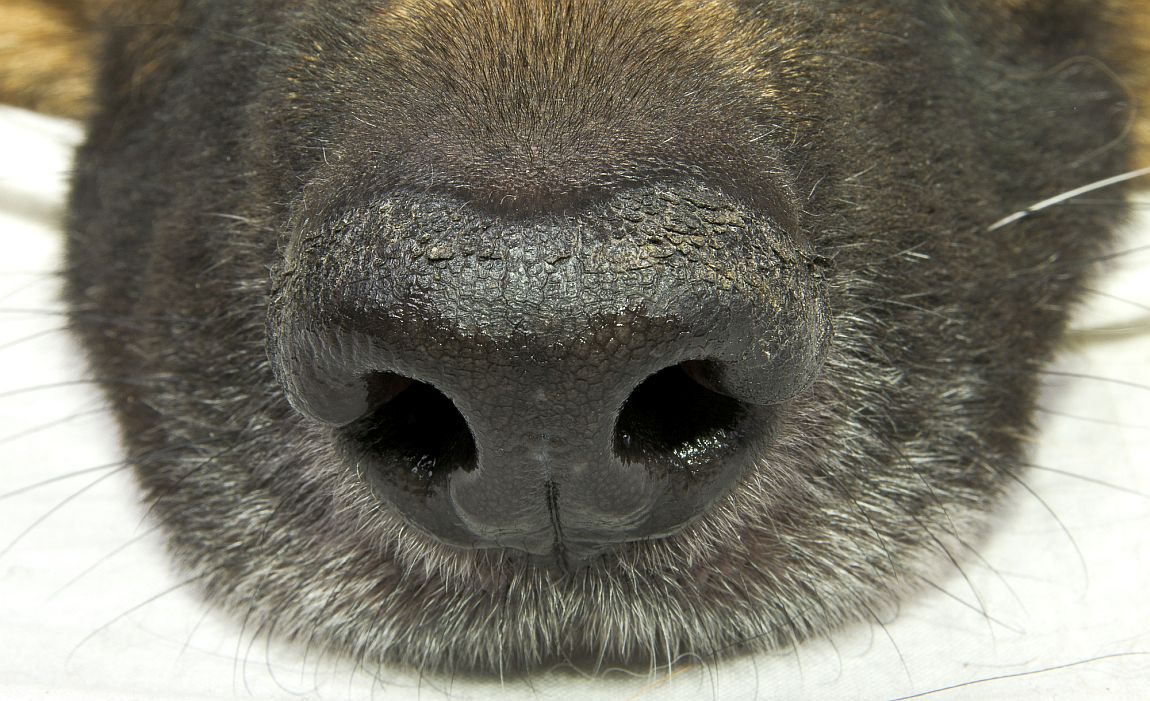

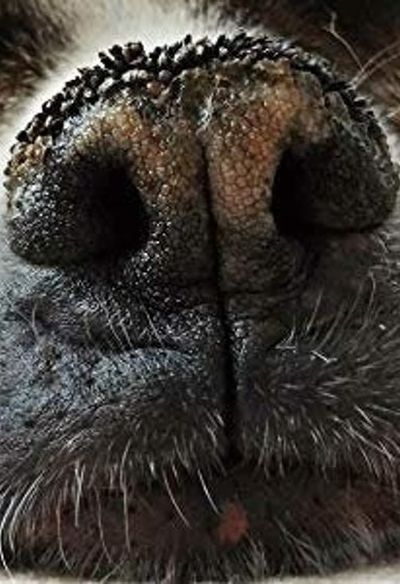
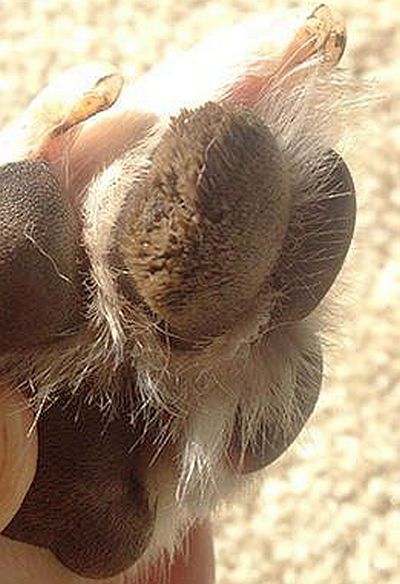

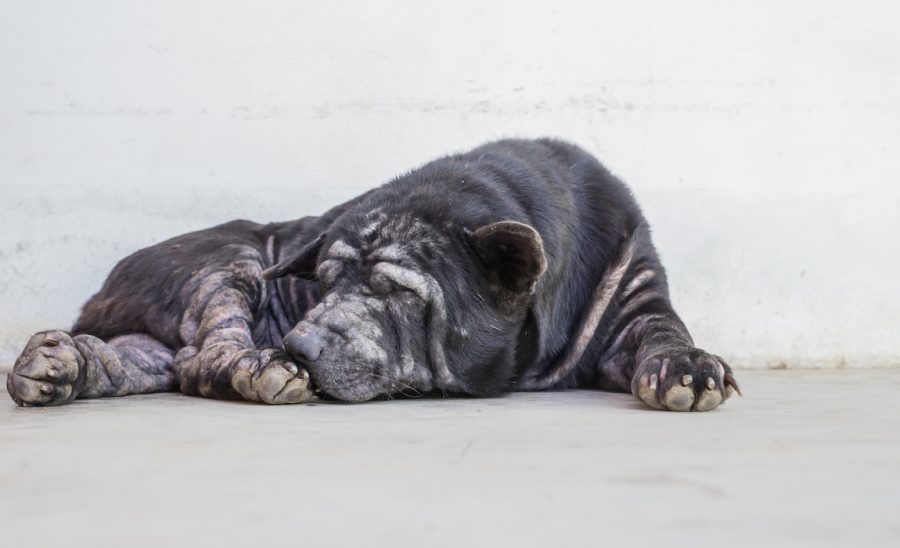


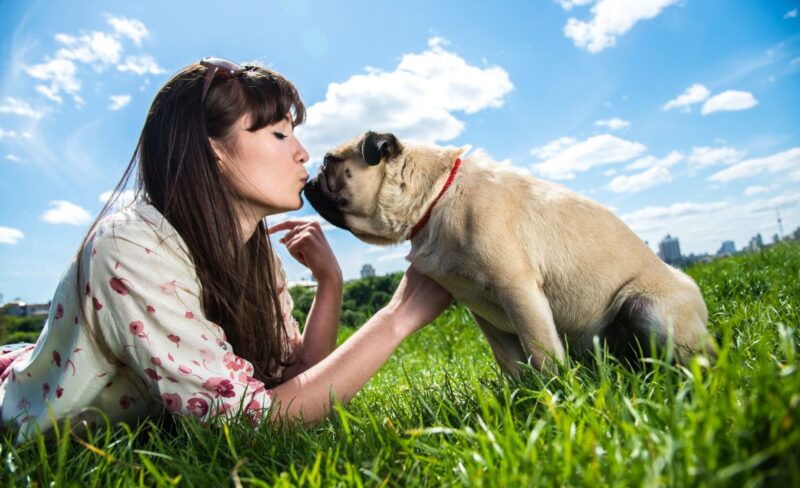

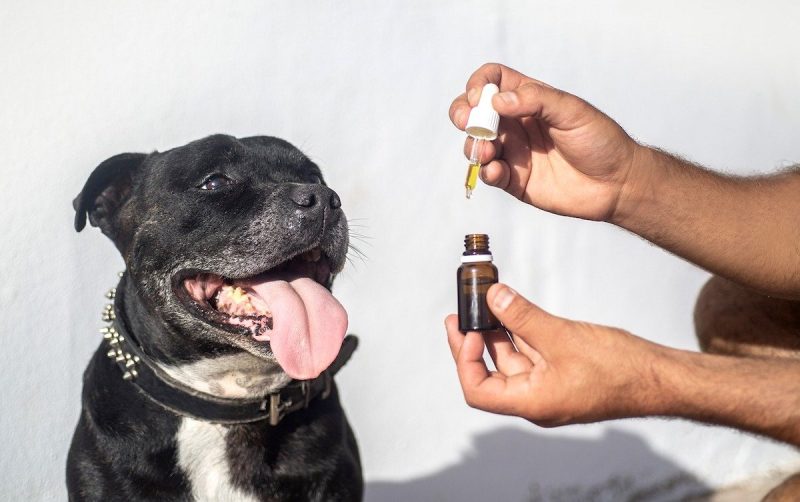
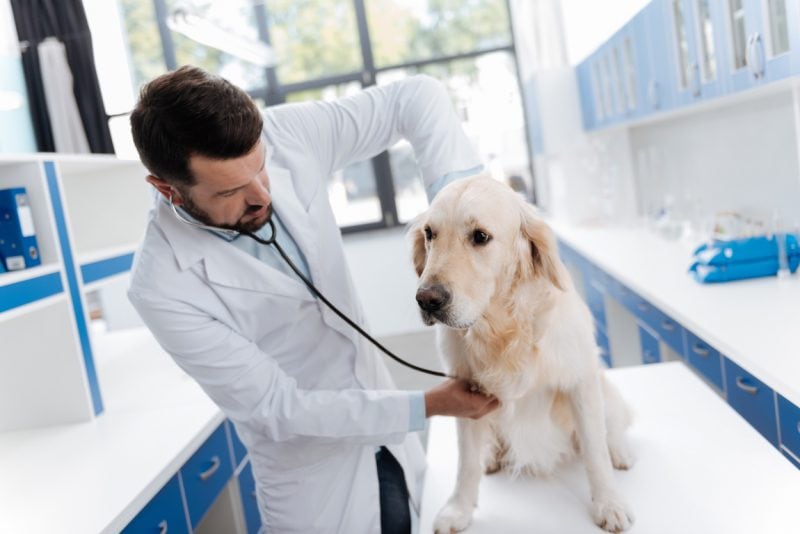
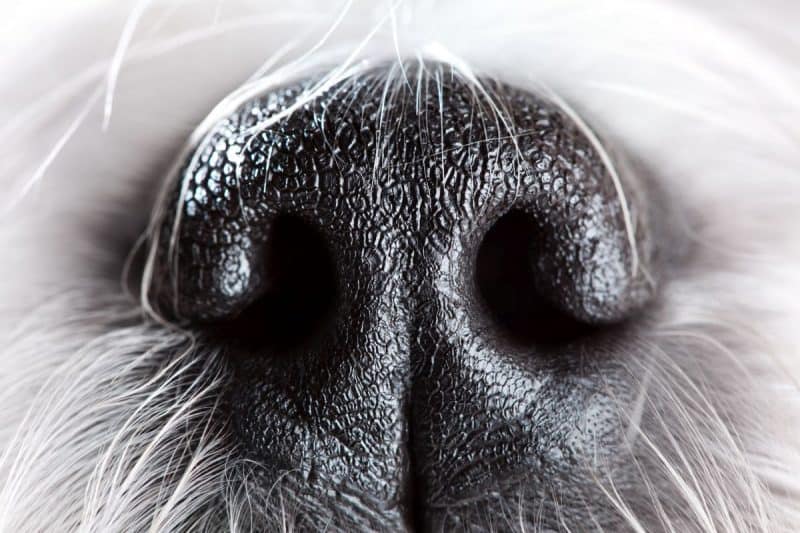
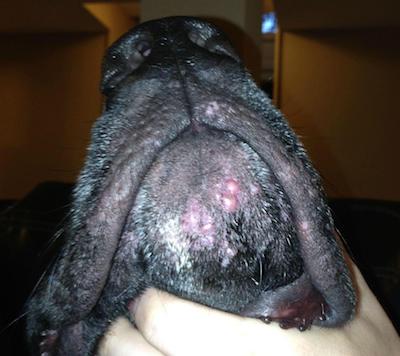
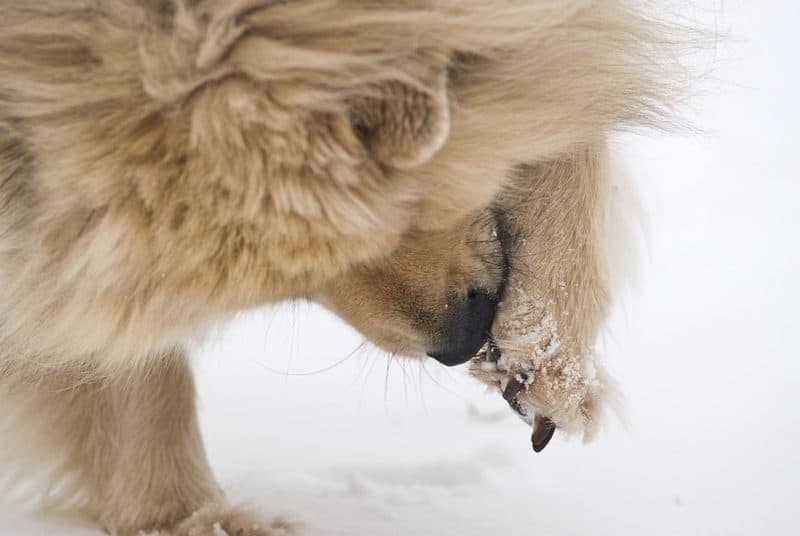

Leave a Comment